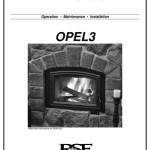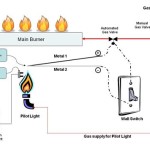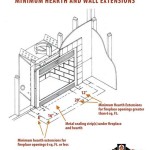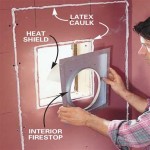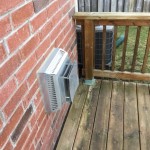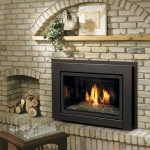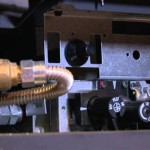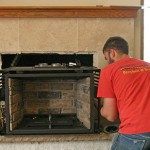Blower Fan for Fireplace: Enhancing Heating Efficiency and Comfort
A fireplace provides warmth and ambiance to a home, especially during colder seasons. However, traditional fireplaces often suffer from inefficiency, allowing a significant portion of the heat to escape up the chimney. A fireplace blower fan offers a solution to this issue, increasing the heat output and distributing it more effectively throughout the room.
A fireplace blower fan, also referred to as a fireplace fan or a hearth fan, is a mechanical device designed to circulate warm air produced by a fireplace. It typically consists of a fan unit, often centrifugal or axial, housed within a metal casing. This casing is designed to fit within the firebox or below the fireplace, depending on the model and design of the fireplace itself. The fan draws cool air from the room, passes it over the heated firebox or firebrick, and then forces the warmed air back into the room. This forced convection significantly improves the overall heating efficiency compared to relying solely on radiant heat.
Fireplace blower fans are available in various sizes and configurations to accommodate different fireplace dimensions and heating requirements. Some models are designed for insertion into existing fireplaces, while others are integrated into the fireplace unit during installation. The selection of an appropriate blower fan depends on factors such as the size of the firebox, the desired heat output, and the noise level tolerated.
Increased Heating Efficiency
The primary benefit of a fireplace blower fan is the increased heating efficiency it provides. Without a blower, much of the heat generated by a fireplace rises directly into the chimney and is lost. The blower fan intercepts this heat and directs it into the living space. This process of forced convection is far more efficient than natural convection, which relies on the gradual rising of warm air. By circulating the warm air, the blower fan helps to evenly distribute heat throughout the room, eliminating cold spots and creating a more comfortable environment.
Studies have shown that fireplace blower fans can significantly improve the heat output of a fireplace. The exact percentage varies depending on the specific fireplace, the type of fuel used, and the design of the blower fan. However, it is generally accepted that a well-chosen and properly installed blower fan can increase the usable heat output by a substantial margin. This can lead to lower heating bills, as the homeowner can rely more on the fireplace for heating and less on central heating systems.
The increased efficiency also contributes to environmental benefits. By burning fuel more completely and reducing the amount of heat lost up the chimney, a fireplace blower fan helps to minimize emissions of harmful pollutants. This makes fireplaces a more environmentally friendly heating option, especially when compared to older, less efficient models.
Improved Air Circulation and Comfort
Beyond increased efficiency, a fireplace blower fan significantly improves air circulation within a room. Without forced circulation, the heat from a fireplace tends to concentrate near the fireplace itself, leaving other areas of the room cooler. The blower fan helps to address this issue by actively circulating the warm air, ensuring that it reaches all corners of the room. This improved air circulation creates a more uniform temperature throughout the space, enhancing overall comfort.
The improved air circulation also helps to prevent the buildup of stagnant air and humidity. By constantly moving the air, the blower fan reduces the likelihood of mold growth and other issues associated with poor ventilation. This is particularly beneficial in homes with tight insulation, where air circulation can be limited.
Furthermore, some fireplace blower fans are equipped with adjustable speed settings. This allows the user to control the amount of air being circulated, tailoring the heat output to their specific needs and preferences. Lower speed settings are suitable for maintaining a comfortable temperature, while higher speed settings can be used to quickly warm a cold room.
Types of Fireplace Blower Fans and Installation
Fireplace blower fans come in several types, each designed for different fireplace configurations. Insert blowers are designed to fit into existing fireplace inserts, which are metal boxes that slide into existing fireplace openings. These blowers are typically installed at the back of the insert and draw air from the bottom, expelling it out the front. Hearth-mounted blowers sit in the hearth below the fireplace opening. They draw air from the room and blow it across the firebox, circulating the heated air. Some newer fireplaces come with integrated blower fans already installed by the manufacturer.
Installation complexity varies depending on the type of blower fan. Most insert blowers can be installed relatively easily by a homeowner with basic tools and some mechanical aptitude. Hearth-mounted blowers are even simpler to install, typically requiring only placement on the hearth and plugging into an electrical outlet. However, integrated blower fans require professional installation as they are part of the fireplace unit itself.
When choosing a fireplace blower fan, it is important to consider the size and type of fireplace. The blower fan should be sized appropriately for the firebox volume to ensure adequate airflow. It is also crucial to consider the noise level of the blower fan, as some models can be quite loud. Reading reviews and comparing specifications can help in selecting a quiet and efficient model. Regular maintenance, such as cleaning the fan blades and air vents, is necessary to ensure optimal performance and longevity.

Fireplace Efficiency Blowers And Why You Should Have One

Noisy Gas Fireplace Blower Here S How To Replace It Diy

Fireplace Fan Blower S Com

Why Should I Get A Fireplace Blower For My Masonry

Universal Fireplace Blower Fan 4 Blade Skeleton Style Midwest Hearth

Fireplace Blower Fans What You Need For Heat Full Service Chimney

Installing A Fireplace Blower Gfk4 Gfk4a In Heatilator Natural Gas

3 Blades Air Blower Heat Powered Wood Stove Fan Small Motor Burner Durable Fireplace Ca

Gas Fireplace Blower Fan Dealer The 1 Resource

Fireplace Blowers Explained How Fans Work Regency
Related Posts

